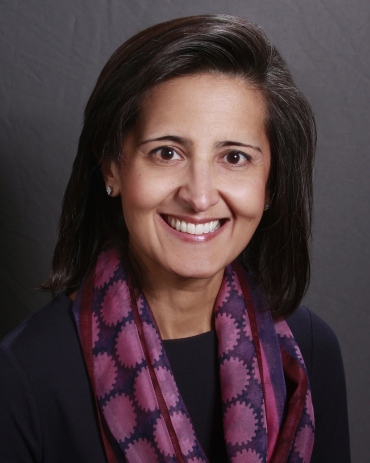Calcium Specks May Help Detect Heart Disease in South Asians
UCSF Finding Could Guide Earlier Treatment Options in Vulnerable Population

Specks of calcium in the heart’s artery walls could be an important prognostic marker of early cardiovascular disease in South Asians and may help guide treatment in this population, according to a study by researchers at UC San Francisco.
In a study of nearly 700 patients with ethnic backgrounds from India, Pakistan, Bangladesh, Sri Lanka, Nepal and Bhutan, UCSF researchers found that South Asian men had the same high rates of change in calcification of their artery walls over a five-year period as white men, the group with the highest rates of cardiovascular disease.
South Asians are known to have a high chance of developing cardiovascular disease and represent more than 60 percent of cardiovascular disease patients worldwide. They also develop risk factors such as high blood pressure, cholesterol and diabetes at a younger age than other racial and ethnic groups. However, it remains unclear which clinical factors could help determine those at highest risk.

“While South Asians have high cardiovascular disease rates, there are few prospective studies in the world that have focused on determining the risk factors,” said lead author Alka Kanaya, MD, UCSF Health internist and professor of medicine at UCSF. “The presence and change of coronary artery calcium may be useful for risk prediction in this ethnic population and may better guide the judicious use of statin and other preventive therapies.”
Early signs of coronary artery calcification (CAC), in which calcium specks appear in artery walls, can be detected through a computed tomography (CT) scan. In other ethnic groups, high CAC scores have been proven to be an early sign of those at high risk of developing cardiovascular disease.
The American Heart Association recently recommended CAC testing in individuals with intermediate heart disease risk to help determine whether they should be treated with cholesterol-lowering medications. These guidelines classify South Asians as a high-risk group.
The study, appearing online Jan. 11, 2019, in the Journal of the American Heart Association (JAHA), is among the findings being generated by the ongoing Mediators of Atherosclerosis in South Asians Living in America (MASALA) study. Led by Kanaya, MASALA is the first long-term study in this population that aims to better understand the factors leading to heart disease and guide prevention and treatment. Since the study began in 2010, it has enrolled more than 1,100 South Asian immigrants living in the San Francisco Bay Area and greater Chicago area, most of whom have spent decades in the United States.
In the JAHA study, Kanaya and her colleagues measured calcification in 698 MASALA patients from CT scans taken five years apart. They compared the incidence and progression rates of CAC to other populations using data from the Multi-Ethnic Study of Atherosclerosis (MESA), a study similar to MASALA that is investigating potential factors for early atherosclerosis in more than 6,800 diverse participants from six U.S. cities.
The researchers found that South Asian men had a higher rate of new calcification than South Asian women, 8.8 percent to 3.6 percent, respectively. After accounting for differences in age, diabetes, high blood pressure and statin use, increases in CAC were similar in South Asian men compared to white men but 122 percent, 64 percent and 54 percent larger than the increases in African Americans, Latinos and Chinese Americans, respectively. There was no significant difference in the amount of CAC change among women in different race/ethnic groups.
“Both CAC burden and progression have been shown to be independent predictors of coronary heart disease in whites, blacks, Latinos and Chinese Americans,” Kanaya said. “The next step for us is to determine if CAC burden and/or progression predicts those at highest risk of having a heart attack or stroke among South Asians.”
Co-Authors: Senior author Matthew Budoff, UCLA Medical Center; Eric Vittinghoff and Feng Lin, UCSF; Namratha Kandula and Kiang Liu, Northwestern University; David Herrington, Wake Forest University Medical Center; and Michael Blaha, Johns Hopkins University.
Funding: The MASALA study is supported by National Institutes of Health grants 1R01HL093009, 2R01HL093009, R01HL120725 and K24HL112827, and at UCSF with grants UL1RR024131, UL1TR001872 and P30DK09 8722. The MESA study was funded by contracts N01-HC-95159, N01-HC-95160, N01-HC-95161, N01-HC-95162, N01-HC-95163, N01-HC-95164, N01-HC-95165, N01-HC-95166, N01-HC-95167, N01-HC-95168 and N01-HC-95169 from the National Heart, Lung, and Blood Institute and by grants UL1-TR-000040 and UL1-TR-001079 from the NCRR.
Disclosures: The authors report no conflicts of interest.
UC San Francisco (UCSF) is a leading university dedicated to promoting health worldwide through advanced biomedical research, graduate-level education in the life sciences and health professions, and excellence in patient care. It includes top-ranked graduate schools of dentistry, medicine, nursing and pharmacy; a graduate division with nationally renowned programs in basic, biomedical, translational and population sciences; and a preeminent biomedical research enterprise. It also includes UCSF Health, which comprises three top-ranked hospitals – UCSF Medical Center and UCSF Benioff Children’s Hospitals in San Francisco and Oakland – as well as Langley Porter Psychiatric Hospital and Clinics, UCSF Benioff Children’s Physicians and the UCSF Faculty Practice. UCSF Health has affiliations with hospitals and health organizations throughout the Bay Area. UCSF faculty also provide all physician care at the public Zuckerberg San Francisco General Hospital and Trauma Center, and the SF VA Medical Center. The UCSF Fresno Medical Education Program is a major branch of the University of California, San Francisco’s School of Medicine.